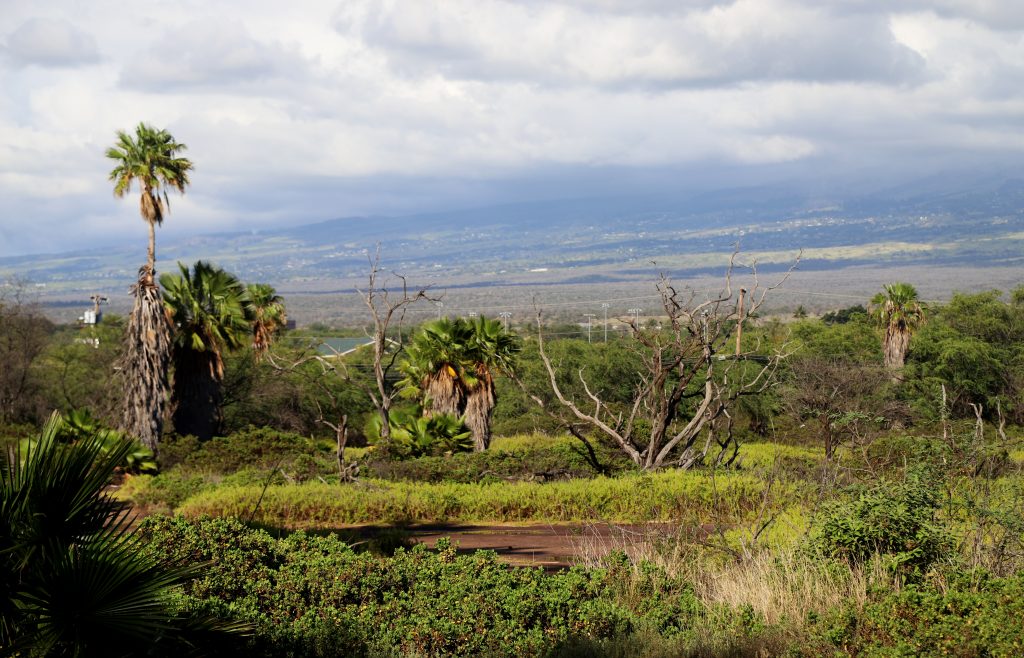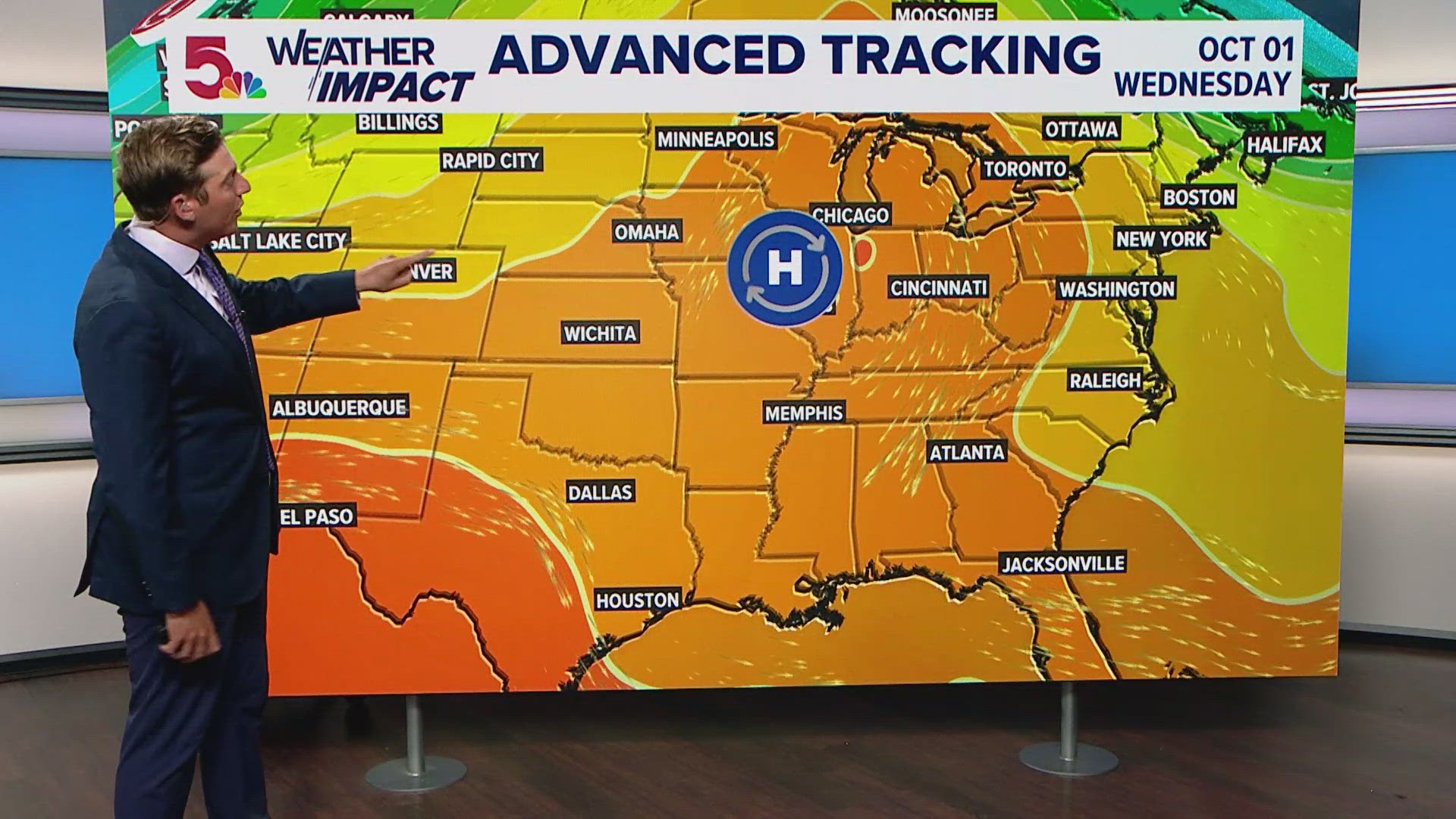Report on the Non-Implementation of Maui County’s Wetland Protection Ordinance and its Impact on Sustainable Development Goals
Executive Summary
In 2022, Maui County enacted Ordinance 5421, a comprehensive law intended to provide robust protection for vital wetland ecosystems. More than two years later, the ordinance remains unimplemented and unenforced, despite the expenditure of over $250,000 on a foundational wetland map. This failure to act has resulted in the unchecked destruction of critical habitats, exemplified by the clearing of the Waipu‘ilani Mauka wetland, and directly undermines Maui’s commitment to achieving key United Nations Sustainable Development Goals (SDGs), particularly those related to environmental protection, climate resilience, and institutional efficacy.
Ordinance 5421: A Framework for Advancing Sustainable Development
Objectives of the Ordinance
The ordinance was designed to establish a new standard for environmental stewardship, going beyond existing federal regulations. Its primary objectives were to:
- Establish an official county policy to protect, preserve, and restore wetland functions and values.
- Adopt a more expansive definition of “wetland” than the federal Clean Water Act, allowing for the protection of more land based on meeting two of three criteria (water, soil type, vegetation) instead of all three.
- Prevent uncontrolled development and land clearing within designated wetland zones.
- Create a process for identifying and acquiring lands for conservation.
Alignment with Sustainable Development Goals
The successful implementation of Ordinance 5421 would directly support progress on several SDGs:
- SDG 15 (Life on Land): By protecting wetland ecosystems, the ordinance aims to conserve critical habitats for native and endangered species, such as the Hawaiian Hoary Bat.
- SDG 14 (Life Below Water): Wetlands serve as natural filters, preventing sediment runoff that smothers and destroys coral reefs, thereby contributing to the health of marine ecosystems.
- SDG 11 (Sustainable Cities and Communities) & SDG 13 (Climate Action): The ordinance is a critical tool for climate adaptation, as healthy wetlands absorb stormwater and mitigate the severe flooding that increasingly affects low-lying communities like South Kīhei.
- SDG 6 (Clean Water and Sanitation): The law supports the preservation of natural water purification and storage systems inherent in wetland environments.
Implementation Status: A Case of Institutional Inaction
Key Implementation Steps and Delays
The process outlined in the ordinance has stalled, demonstrating significant institutional barriers.
- Ordinance Enactment (2022): A policy was established to protect wetlands, which environmental advocates argue should have guided county actions immediately.
- Wetland Mapping (Completed 2024): A map identifying wetlands on Maui, Lānaʻi, and Molokaʻi was completed at a cost of $274,064.72. However, its completion was delayed, and its final accuracy has been questioned by environmentalists.
- Stalled Progress: The Maui County Council has not adopted the required “wetlands overlay district,” a critical step for enforcement. This action is reportedly pending guidance from the Conservation Planning Committee.
- Institutional Paralysis: The Conservation Planning Committee, tasked with advising the council, has been unable to provide guidance as it lacks sufficient members and has not convened in approximately two years.
Impact on SDG 16: Peace, Justice and Strong Institutions
The failure to enforce Ordinance 5421 highlights significant weaknesses in local governance, undermining SDG 16. These failures include:
- A lack of enforcement for a duly enacted law.
- Bureaucratic paralysis, where progress is halted by dependency on a non-functional advisory committee.
- A reported absence of “political will” to overcome procedural hurdles and prioritize environmental protection.
- The creation of a confusing and litigious environment, forcing community groups to file lawsuits to seek the protections the ordinance was meant to provide.
Consequences of Inaction on Environmental and Community Well-being
Case Study: Waipu‘ilani Mauka Wetland
In July 2023, a 7-acre wetland habitat near Kīhei, crucial for the endangered Hawaiian Hoary Bat, was cleared by excavators. This destruction proceeded despite community alarms and the existence of Ordinance 5421. The incident, which is now the subject of a lawsuit, serves as a stark example of the real-world consequences of the county’s failure to implement its own environmental laws, directly setting back progress on SDG 15.
Broader Implications for Sustainability
- Increased Community Vulnerability: The continued loss of wetlands in areas like South Maui exacerbates flooding from storm events, making communities less safe and resilient, in direct opposition to the goals of SDG 11 and SDG 13.
- Ecosystem Degradation: Without enforcement, development and land clearing continue to threaten biodiversity (SDG 15) and the health of nearshore marine environments (SDG 14).
- Erosion of Public Trust: The inability of the county government to implement its own environmental mandates erodes public trust and discourages civic engagement, weakening the foundations of strong institutions (SDG 16).
Disputes Over Scope and the Path Forward
Interpretive Disagreements
Significant debate persists regarding the ordinance’s current legal standing and scope. Environmental lawyers and the former council member who championed the bill argue that its policy mandate is clear and should be enforced regardless of the stalled zoning process. Conversely, the county’s planning department maintains it is waiting for the council to act. Further ambiguity exists over whether the law applies to smaller projects, such as single-family homes, which could create a major loophole and limit its effectiveness in promoting sustainable development under SDG 11.
Conclusion
Maui County’s Ordinance 5421 represents a forward-thinking legislative tool designed to advance multiple Sustainable Development Goals. However, it has been rendered ineffective by institutional inertia and a lack of political will. The ongoing failure to implement and enforce this law allows for the continued degradation of irreplaceable ecosystems, increases community risk, and undermines faith in governance. Fulfilling the county’s commitment to a sustainable future requires immediate council action to resolve the bureaucratic impasse and enforce the environmental protections promised to its citizens.
Analysis of Sustainable Development Goals in the Maui Wetlands Article
1. Which SDGs are addressed or connected to the issues highlighted in the article?
-
SDG 6: Clean Water and Sanitation
- The article connects the health of wetlands to water systems. It mentions that wetlands serve as a “barrier for sediment runoff,” which implies a role in maintaining water quality for other ecosystems, like coral reefs. The failure to protect wetlands, therefore, impacts water-related ecosystems.
-
SDG 11: Sustainable Cities and Communities
- The article highlights the issue of increased flooding in South Maui’s low-lying neighborhoods due to the destruction of wetlands. It states that wetlands are “crucial repositories for storm water” and provide “crucial flood protection.” The failure to protect them makes the community more vulnerable to natural disasters, directly impacting the safety and sustainability of the residential areas.
-
SDG 13: Climate Action
- The article discusses the role of wetlands in mitigating the effects of climate-related events. By mentioning that wetlands “absorb the storm water” from “big rain storms,” it points to their function in building resilience against climate-related hazards like extreme weather and flooding, which is a key aspect of climate action.
-
SDG 14: Life Below Water
- The destruction of wetlands is directly linked to the health of marine ecosystems. The article states that development leads to “sediment runoff that kills coral reefs.” Protecting wetlands is presented as a necessary step to protect coastal and marine life from land-based pollution and degradation.
-
SDG 15: Life on Land
- This is the most central SDG in the article. The core issue is the destruction of the Waipu‘ilani Mauka wetland, a terrestrial and inland freshwater ecosystem. The article explicitly mentions the loss of habitat for the “endangered Hawaiian Hoary Bats” and the overall policy goal to “protect wetlands.”
-
SDG 16: Peace, Justice and Strong Institutions
- A major theme of the article is institutional failure. It details how a 2022 ordinance passed by Maui County to protect wetlands “has never been fully implemented, let alone enforced.” The article describes bureaucratic inaction, confusion, a stalled County Council, and an inactive advisory committee as reasons for the failure, pointing to a lack of effective, accountable, and transparent institutions.
2. What specific targets under those SDGs can be identified based on the article’s content?
-
Target 6.6: By 2020, protect and restore water-related ecosystems, including mountains, forests, wetlands, rivers, aquifers and lakes.
- The entire article is about the failure to implement Ordinance 5421, a law specifically created to “protect wetlands” and prevent their destruction. The ordinance’s goal was to “increase that back up and absorb the storm water,” which is a form of restoration and protection.
-
Target 11.5: By 2030, significantly reduce the number of deaths and the number of people affected and substantially decrease the direct economic losses relative to global gross domestic product caused by disasters, including water-related disasters, with a focus on protecting the poor and people in vulnerable situations.
- The article links wetland destruction directly to increased “flooding in recent years” in South Maui, where “muddy water” washes out major roads. This highlights the community’s increased vulnerability to water-related disasters due to environmental mismanagement.
-
Target 13.1: Strengthen resilience and adaptive capacity to climate-related hazards and natural disasters in all countries.
- The wetlands’ function as “crucial repositories for storm water” during “big rain storms” is a natural mechanism for climate adaptation. The failure to protect them weakens the region’s resilience to such climate-related hazards.
-
Target 14.2: By 2020, sustainably manage and protect marine and coastal ecosystems to avoid significant adverse impacts, including by strengthening their resilience, and take action for their restoration in order to achieve healthy and productive oceans.
- The article explicitly states that development and the resulting “sediment runoff… kills coral reefs.” This shows a direct link between the land-based issue of wetland clearing and adverse impacts on marine ecosystems.
-
Target 15.1: By 2020, ensure the conservation, restoration and sustainable use of terrestrial and inland freshwater ecosystems and their services, in particular forests, wetlands, mountains and drylands, in line with obligations under international agreements.
- The article focuses on the destruction of the “Waipu‘ilani Mauka wetland” and the unenforced ordinance designed to “protect these vital habitats.” This directly relates to the conservation and sustainable use of wetland ecosystems.
-
Target 15.5: Take urgent and significant action to reduce the degradation of natural habitats, halt the loss of biodiversity and, by 2020, protect and prevent the extinction of threatened species.
- The clearing of the 7-acre thicket is described as the destruction of a “crucial habitat for the endangered Hawaiian Hoary Bats during pupping season.” This is a clear example of habitat degradation affecting a threatened species.
-
Target 16.6: Develop effective, accountable and transparent institutions at all levels.
- The article is a case study of institutional failure. It describes how an ordinance passed in 2022 remains unenforced due to “inaction and confusion,” a stalled council, and a non-functioning advisory committee. The statement that the law “has instead become a cautionary tale of how promised stewardship of the environment can fall flat” directly addresses the lack of effective and accountable governance.
3. Are there any indicators mentioned or implied in the article that can be used to measure progress towards the identified targets?
- Extent of wetland area: The article provides specific figures that can be used as indicators. It mentions the “estimated 83 acres of wetlands left in South Maui” and the destruction of a “7-acre” portion. The change in the total acreage of protected wetlands is a direct indicator for targets 6.6 and 15.1. The creation of a “map of the wetlands” is itself a tool for this indicator.
- Status of threatened species: The mention of the “endangered Hawaiian Hoary Bats” and the destruction of their “crucial habitat” implies that the health and population of this species, or the extent of its protected habitat, serves as an indicator for target 15.5.
- Frequency and impact of flooding events: The article notes that residents “have grown used to flooding in recent years” and that storms cause roads to be washed out. The number of flooding incidents and the extent of damage (e.g., road closures) are implied indicators for target 11.5.
- Health of coral reefs: The statement that “sediment runoff that kills coral reefs” implies that the health, biodiversity, or mortality rate of local coral reefs can be used as an indicator to measure the impact of land management on marine ecosystems (Target 14.2).
- Implementation status of environmental laws: A key indicator for target 16.6 is the status of Ordinance 5421. The article states it “has never been fully implemented, let alone enforced” almost three years after enactment. The functionality of the “Conservation Planning Committee” (which “hasn’t met in about two years”) is another concrete indicator of institutional effectiveness.
- Public expenditure on environmental management: The article mentions that over “$250,000” (and more specifically, “$274,064.72”) was spent on a wetland map that has not been used for enforcement. This figure serves as an indicator of public expenditure and its effectiveness (or lack thereof) in achieving policy goals (Target 16.6).
4. SDGs, Targets, and Indicators Table
| SDGs | Targets | Indicators (Mentioned or Implied in the Article) |
|---|---|---|
| SDG 6: Clean Water and Sanitation | 6.6: Protect and restore water-related ecosystems, including wetlands. | Extent of wetland area (e.g., the “83 acres of wetlands left in South Maui”). |
| SDG 11: Sustainable Cities and Communities | 11.5: Reduce the impact of water-related disasters. | Frequency and severity of flooding events (“flooding in recent years,” “washing out the major road”). |
| SDG 13: Climate Action | 13.1: Strengthen resilience and adaptive capacity to climate-related hazards. | Capacity of wetlands to absorb storm water from “big rain storms.” |
| SDG 14: Life Below Water | 14.2: Protect and restore marine and coastal ecosystems. | Health of coral reefs (impacted by “sediment runoff that kills coral reefs”). |
| SDG 15: Life on Land | 15.1: Conserve and restore terrestrial and inland freshwater ecosystems, especially wetlands.
15.5: Halt biodiversity loss and protect threatened species. |
Acreage of wetlands destroyed or protected (e.g., the “7-acre” plot cleared).
Status of endangered species and their habitats (e.g., “crucial habitat for the endangered Hawaiian Hoary Bats”). |
| SDG 16: Peace, Justice and Strong Institutions | 16.6: Develop effective, accountable and transparent institutions. | Implementation status of Ordinance 5421 (“never been fully implemented”). Functionality of government bodies (Conservation Planning Committee “hasn’t met in about two years”). Effectiveness of public spending ($274,064.72 spent on an unenforced map). |
Source: civilbeat.org







